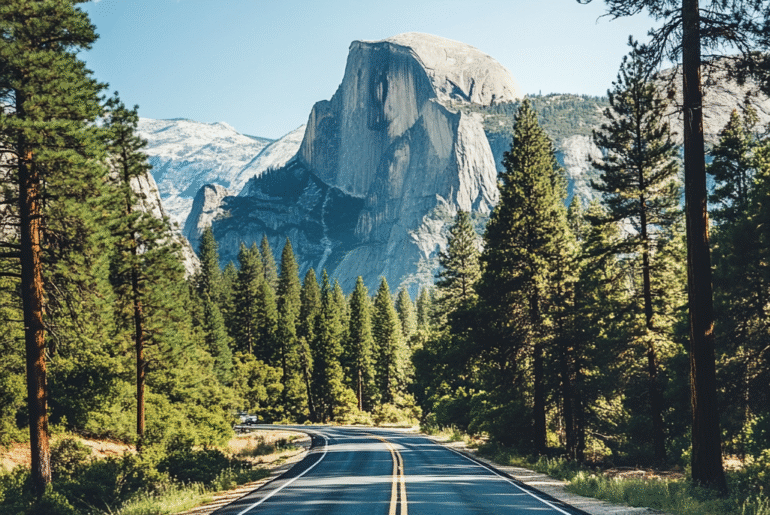This article may contain references to products or services from one or more of our advertisers or partners. We may receive compensation when you click on links to those products or services. Nonetheless, our opinions are our own.
The information presented in this article is accurate to the best of our knowledge at the time of publication. However, information is subject to change, and no guarantees are made about the continued accuracy or completeness of this content after its publication date.
You’re drawn to the serene beauty of national parks, where breathtaking landscapes and the thrill of outdoor adventure await. But as you journey through these natural wonders, it’s vital to acknowledge that risks lie beneath the surface of tranquility. Recently, two lives were lost in a tragic accident within one of our national parks—a stark reminder that such incidents are becoming more common. We will explore the factors contributing to the rising frequency of accidents in these areas, the importance of safety awareness, and how you can enjoy the outdoors without falling victim to unforeseen dangers. Let’s examine how to navigate the beauty of nature responsibly.
- Understanding the Rising Risks in National Parks
- Recognizing the Factors Behind Frequent Accidents
- Prioritizing Safety: Essential Tips for Your Next Adventure
- What to Do in Case of an Emergency in Nature
- The Importance of Education and Preparedness in Outdoor Activities
- How You Can Contribute to Safer National Park Experiences
- Conclusion: Nature’s Beauty Deserves Our Respect—and Caution
- Frequently Asked Questions
- What happened in the recent national park accident?
- What factors are contributing to the increase in accidents in national parks?
- What should visitors know before exploring national parks?
- Are there any safety measures in place to prevent such accidents?
- How can we prevent accidents in national parks in the future?
- What steps can individuals take if they witness an accident?
- Recommended Reads
Understanding the Rising Risks in National Parks
As you step into the expansive landscapes of national parks, the allure of nature can sometimes mask the inherent dangers. With the increasing number of visitors, the likelihood of accidents, including fatalities, has become more frequent. Contributing factors include:
Inexperienced Visitors—Many newcomers are unprepared for the challenges of wilderness settings.
Wildlife Encounters—Interactions with wild animals can escalate quickly if not handled properly.
Unpredictable Weather—Sudden changes can leave hikers and campers vulnerable.
Disregard for Safety Protocols—Following park regulations can lead to dangerous situations.
Staying informed and vigilant is essential. Reviewing safety guidelines and local alerts can help you make better decisions.
| Safety Precautions | Details |
|---|---|
| Research Your Location | Learn about the terrain and specific challenges of the park. |
| Pack Emergency Supplies | Carry a first-aid kit, water, snacks, and navigation tools. |
| Communicate Plans | Please share your itinerary and expected return time with a colleague. |
| Stay Updated | Check alerts for trail conditions and wildlife sightings. |
Recognizing the Factors Behind Frequent Accidents
Accidents in national parks often result from a mix of natural hazards and human error. Visitors may underestimate the dangers of exploring remote areas. Being surrounded by scenic vistas doesn’t eliminate the need for caution.
Key contributing factors:
Rapid Weather Changes— A sunny day can quickly shift into hazardous conditions.
Unfamiliar Terrain—Lack of familiarity can lead to poor hiking or climbing decisions.
Distractions—Taking photos or posting on social media can cause people to lose awareness of their surroundings.
Wildlife Encounters—Observing animals is fascinating, but approaching them too closely is dangerous.
| Factor | Potential Risk |
|---|---|
| Weather Changes | Can lead to hypothermia, getting lost, or falling. |
| Inexperience | This increases the risk of injury or becoming stranded. |
| Wildlife | This may result in injury if animals feel threatened. |
Prioritizing Safety: Essential Tips for Your Next Adventure
The excitement of exploring nature can sometimes overshadow the need for safety, but tragic events serve as reminders that preparation is key. Whether you’re hiking, camping, or sightseeing, follow these essential guidelines:
Research Your Destination—Know the area, terrain, weather, and hazards.
Tell Someone Your Plans— Share your itinerary with a trusted contact.
Pack Essentials—Bring a first-aid kit, food, water, and navigation tools.
Know Your Limits—Choose activities that match your experience level.
| Item | Purpose |
|---|---|
| First Aid Kit | Treat minor injuries |
| Water & Snacks | Maintain hydration and energy |
| Map & Compass | Navigate without relying on devices |
| Emergency Whistle | Signal for help when needed |
Voted "Best Overall Budgeting App" by Forbes and WSJ
Monarch Money helps you budget, track spending, set goals, and plan your financial future—all in one app.
Get 50% OFF your first year with code MONARCHVIP
What to Do in Case of an Emergency in Nature
If you find yourself in an emergency outdoors, remain calm and follow these steps:
Assess the Situation—Determine the severity and immediate needs.
Make Yourself Visible—Use a whistle, bright clothing, or reflective items to attract attention.
Administer First Aid—If trained, provide help for serious injuries.
Communicate—Use a phone, satellite device, or emergency beacon to call for assistance.
| Item | Purpose |
|---|---|
| First Aid Kit | For on-the-spot treatment |
| Water Purification | Ensure access to drinkable water |
| Flashlight | For light and visibility in low conditions |
| Map & Compass | Navigate if devices fail |
The Importance of Education and Preparedness in Outdoor Activities
Venturing into the wilderness requires more than enthusiasm—it demands knowledge and planning. Consider learning these essential skills:
Navigation—Understand map reading and GPS use.
First Aid—Know how to treat injuries and manage emergencies.
Weather Awareness—Interpret forecasts to avoid dangerous conditions.
Wildlife Safety—Learn how to observe animals without risking encounters.
| Preparation Step | Description |
|---|---|
| Research Your Route | Study maps and trail information |
| Check the Weather | Watch for storms or temperature shifts |
| Pack Essentials | Bring food, water, and emergency tools |
| Inform Someone | Leave your plans with someone back home |
How You Can Contribute to Safer National Park Experiences
Safety is a shared responsibility. Obey these simple rules to make national parks safer for all:
Stay on Designated Trails—Protect both yourself and the environment.
Store Food Properly—Use bear-proof containers when needed.
Travel in Groups—Safety increases when you’re not alone.
Use this checklist before your trip:
| Preparation Tips | Check Before You Go |
|---|---|
| Research Trail Difficulty | Match your ability with the trail’s demands |
| Pack Adequate Supplies | First aid, food, water, and navigation gear |
| Check Weather Conditions | Adjust plans based on updated forecasts |
Conclusion: Nature’s Beauty Deserves Our Respect—and Caution
The recent fatal accident serves as a sobering reminder that the wild, while breathtaking, is not without danger. As public interest in outdoor exploration grows, so does the need for greater awareness, preparation, and responsibility. By taking the time to plan, learn, and respect the land, you not only protect yourself but also help preserve the safety and majesty of national parks for future generations. Let’s enjoy the wilderness, not fear it, but never forget what’s at stake.
Frequently Asked Questions
What happened in the recent national park accident?
Two individuals lost their lives in an accident while hiking. Details are still unfolding, but initial reports indicate a fall during the excursion.
What factors are contributing to the increase in accidents in national parks?
Rising visitor numbers, lack of preparation, and underestimating outdoor risks are the primary causes.
What should visitors know before exploring national parks?
Know the terrain, prepare appropriate gear, check the weather, and stay on marked trails. Understand your physical limits.
Are there any safety measures in place to prevent such accidents?
Yes. Parks provide signage, ranger education programs, and hazard warnings. However, individual responsibility remains crucial.
How can we prevent accidents in national parks in the future?
Public awareness, improved signage, and education campaigns can help. Managing crowd sizes in high-risk areas may also reduce incidents.
What steps can individuals take if they witness an accident?
Ensure your safety first. Call for help with details about the location and situation. If trained, administer first aid and avoid moving the injured unless there’s immediate danger.

Reviewed and edited by Albert Fang.
See a typo or want to suggest an edit/revision to the content? Use the contact us form to provide feedback.
At FangWallet, we value editorial integrity and open collaboration in curating quality content for readers to enjoy. Much appreciated for the assist.
Did you like our article and find it insightful? We encourage sharing the article link with family and friends to benefit as well - better yet, sharing on social media. Thank you for the support! 🍉
Article Title: Two Killed in Rising National Park Accident Trend
https://fangwallet.com/2025/05/03/two-killed-in-rising-national-park-accident-trend/The FangWallet Promise
FangWallet is an editorially independent resource - founded on breaking down challenging financial concepts for anyone to understand since 2014. While we adhere to editorial integrity, note that this post may contain references to products from our partners.
The FangWallet promise is always to have your best interest in mind and be transparent and honest about the financial picture.
Become an Insider

Subscribe to get a free daily budget planner printable to help get your money on track!
Make passive money the right way. No spam.
Editorial Disclaimer: The editorial content on this page is not provided by any of the companies mentioned. The opinions expressed here are the author's alone.
The content of this website is for informational purposes only and does not represent investment advice, or an offer or solicitation to buy or sell any security, investment, or product. Investors are encouraged to do their own due diligence, and, if necessary, consult professional advising before making any investment decisions. Investing involves a high degree of risk, and financial losses may occur including the potential loss of principal.
Source Citation References:
+ Inspo
There are no additional citations or references to note for this article at this time.












































